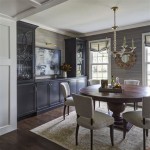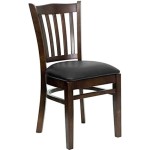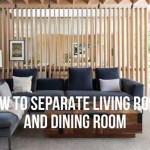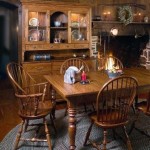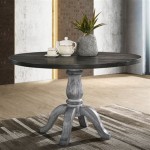Farmhouse Board and Batten Dining Room: A Comprehensive Guide
The farmhouse aesthetic, with its emphasis on rustic charm, natural materials, and comfortable living, continues to be a popular choice for homeowners. Within this design style, board and batten wainscoting has emerged as a prominent feature, lending texture, character, and a touch of timeless elegance to interior spaces. The dining room, often considered the heart of the home, becomes an ideal canvas for showcasing the beauty and versatility of board and batten. This article provides a detailed exploration of incorporating board and batten into a farmhouse dining room, covering design considerations, material selection, installation tips, and complementary décor choices.
Understanding Board and Batten
Board and batten is a type of vertical siding or paneling characterized by wide boards and narrow strips of wood, called battens, that cover the seams between the boards. This construction method was traditionally used for exterior cladding, providing a durable and weather-resistant barrier. However, its aesthetic appeal has led to its widespread adoption as an interior design element. In the context of a dining room, board and batten is typically installed as wainscoting, covering the lower portion of the walls, although it can also be used to cover entire walls for a more dramatic effect.
The visual effect of board and batten is one of verticality and texture. The vertical lines draw the eye upwards, making the room feel taller and more spacious. The contrasting textures of the wide boards and the narrow battens add depth and interest to the walls. The spacing and width of the boards and battens can be customized to create different visual effects, from a more traditional, closely spaced pattern to a more modern, minimalist design with wider spacing.
Furthermore, board and batten offers practical benefits beyond aesthetics. It can protect walls from scuffs and scratches, especially in high-traffic areas like the dining room. It also provides a degree of insulation, helping to regulate the temperature of the room. The installation process, while requiring some DIY skills or professional assistance, is relatively straightforward, making it an accessible option for many homeowners.
Design Considerations for a Farmhouse Board and Batten Dining Room
When incorporating board and batten into a farmhouse dining room, several design considerations come into play. These include the height of the wainscoting, the spacing and width of the boards and battens, the color palette, and the overall style of the room.
Height: The height of the board and batten wainscoting should be proportional to the height of the room. A general guideline is to install it at a height of one-third to one-half of the wall height. For standard 8-foot ceilings, a wainscoting height of 32 to 48 inches is typically appropriate. Taller ceilings can accommodate taller wainscoting. Consider the placement of furniture and architectural features when determining the height. It's often desirable to have the wainscoting align with the top of chairs or other furniture pieces.
Spacing and Width: The spacing between the battens and the width of the boards and battens themselves will significantly impact the overall aesthetic. Closer spacing of the battens creates a more traditional and busier look, while wider spacing results in a more modern and minimalist appearance. Common board widths range from 4 to 8 inches, while batten widths typically range from 1.5 to 3 inches. Experimenting with different combinations before committing to a final design is recommended.
Color Palette: The color of the board and batten should complement the overall color scheme of the dining room. For a classic farmhouse look, white or off-white painted board and batten is a popular choice. This creates a clean and bright backdrop for the dining area. Other options include soft grays, blues, and greens, which can add a touch of color while still maintaining a farmhouse aesthetic. Consider the color of the upper walls and the trim when selecting a color for the board and batten. A contrasting color can create a dramatic effect, while a complementary color will provide a more cohesive look.
Overall Style: The board and batten should be consistent with the overall style of the farmhouse dining room. If the room has a more rustic and traditional feel, opt for a more ornate board and batten design with detailed trim and decorative elements. For a more modern farmhouse aesthetic, a simpler and more minimalist design with clean lines and minimal ornamentation is preferable. Consider the other design elements in the room, such as the furniture, lighting, and décor, to ensure that the board and batten integrates seamlessly with the overall space.
Material Selection and Installation
The choice of materials for the board and batten will impact its durability, appearance, and cost. Common material options include wood, MDF (medium-density fiberboard), and PVC (polyvinyl chloride).
Wood: Wood is a classic choice for board and batten, offering a natural and authentic look. Pine is a popular option due to its affordability and availability. Other wood species, such as oak, maple, and poplar, can also be used, depending on the desired aesthetic and budget. Wood requires proper sealing and painting to protect it from moisture and insects. It is also susceptible to warping and cracking over time, especially in areas with high humidity.
MDF: MDF is a manufactured wood product made from wood fibers and resin. It is a more affordable alternative to solid wood and is less prone to warping and cracking. MDF is also easy to paint and can be primed to create a smooth and even surface. However, MDF is more susceptible to water damage than solid wood and should not be used in areas with high moisture levels. It's crucial to properly seal all edges and surfaces of MDF to prevent moisture absorption.
PVC: PVC is a synthetic material that is waterproof, durable, and resistant to insects and rot. It is a low-maintenance option that is ideal for areas with high humidity or moisture. PVC is also easy to clean and can be painted to match any color scheme. However, PVC can be more expensive than wood or MDF and may not have the same natural look and feel as wood.
The installation process for board and batten typically involves the following steps:
- Preparation: Prepare the wall surface by cleaning it and patching any holes or imperfections. Mark the desired height of the wainscoting and use a level to ensure that the lines are straight.
- Baseboard Installation: Install a baseboard along the bottom of the wall to provide a foundation for the board and batten. The baseboard should be level and securely attached to the wall.
- Board Installation: Cut the boards to the desired height and attach them to the wall using construction adhesive and nails or screws. Ensure that the boards are evenly spaced and plumb.
- Batten Installation: Cut the battens to the desired height and attach them to the wall over the seams between the boards using construction adhesive and nails or screws. Ensure that the battens are centered over the seams and plumb.
- Trim Installation: Install trim along the top of the wainscoting to create a finished look. The trim can be simple or ornate, depending on the desired style.
- Finishing: Fill any nail holes or imperfections with wood filler and sand smooth. Prime and paint the board and batten to the desired color.
Proper planning and attention to detail are essential for a successful board and batten installation. If unsure about any of the steps, consult with a professional contractor.
Complementary Décor for a Farmhouse Board and Batten Dining Room
To complete the farmhouse look in the dining room, select décor that complements the board and batten and enhances the overall aesthetic. Consider the following elements:
Dining Table and Chairs: A rustic wood dining table is a quintessential element of a farmhouse dining room. Opt for a table with a distressed finish or a natural wood grain to enhance the rustic charm. Pair the table with comfortable chairs, such as Windsor chairs, ladder-back chairs, or upholstered chairs with a linen or cotton fabric. Mismatched chairs can add a touch of eclectic charm to the room.
Lighting: Lighting plays a crucial role in setting the mood of the dining room. A chandelier with a rustic or vintage design is a classic choice for a farmhouse dining room. Other options include pendant lights, sconces, and table lamps. Choose lighting fixtures with warm tones to create a cozy and inviting atmosphere. Consider incorporating dimmer switches to adjust the lighting levels for different occasions.
Textiles: Textiles can add warmth and texture to the dining room. A farmhouse-style rug, such as a jute rug or a braided rug, can anchor the dining area and add visual interest. Table linens, such as a linen tablecloth or placemats, can enhance the dining experience. Consider adding curtains or drapes to the windows to provide privacy and control the amount of natural light entering the room. Choose fabrics with natural fibers, such as cotton, linen, or wool, to complement the farmhouse aesthetic.
Accessories: Accessories can add personality and character to the dining room. Consider adding decorative items such as farmhouse-style artwork, antique clocks, vintage mirrors, and rustic planters. Fill the planters with fresh flowers or greenery to bring a touch of nature into the room. Display family photos or cherished mementos on shelves or sideboards to personalize the space. Remember to avoid clutter and maintain a sense of simplicity and order.
Wall Decor: The wall space above the board and batten wainscoting provides ample opportunity for displaying artwork and other decorative elements. Large-scale paintings, framed prints, and vintage signs can add visual interest and personality to the room. Consider creating a gallery wall with a collection of smaller items. Mirrors can be used to reflect light and make the room feel larger. Choose artwork and accessories that complement the color scheme and overall style of the dining room.

Modern Farmhouse Dining Room With Board Batten

The Stunning Look Of Board And Batten Inside Out Town Country Living

Modern Farmhouse Dining Room Design Home By Kmb

Board And Batten In The Dining Room Town Country Living

Easiest Ever Diy Board And Batten Wall Tutorial Making It In The Mountains

13 Board Batten Wall Ideas For Every Room Style

Modern Farmhouse Dining Room Designed Simple

Small Dining Room Makeover Reveal Bringing A Mood Board To Life Worthing Court Diy Home Decor Made Easy

Board And Batten Dining Room Wall Four Generations One Roof

Modern Farmhouse Dining Room Design Home By Kmb

